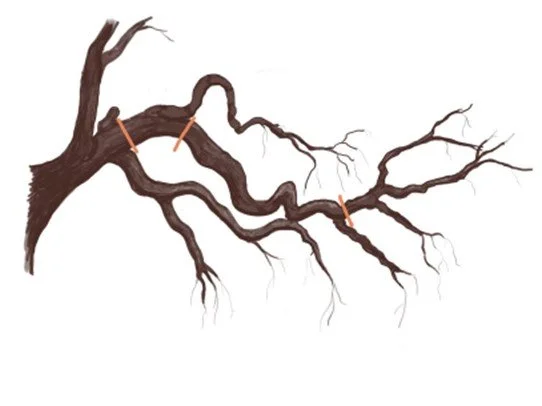Live Oaks
Interior live oak (Quercus wislizeni)
Coastal live oak (Quercus agrifolia)
Canyon live oak (Quercus chrysolepis)
Scrub oak (Quercus berberidifolia)
Leather oak (Quercus durata)
Live Oak leaves are retained year-round. Leaves are thick and leathery, generally oval-shaped, and often have holly-like spines along leaf edges.
Stewardship Considerations
Identifying oak species will help determine proper pruning as species vary widely in their growth rate and pattern and mature height. A small Scrub Oak (Q. berberidifolia) or Blue Oak (Q. douglasii) might be decades old, and heavy thinning and/or improper pruning can damage an entire grove and ecosystem.
When pruning oaks, remember that “Less is More.” Oaks are generally slow-growing and long-lived trees. Larger trees grow more slowly and are less tolerant of pruning. Avoid removing large branches (over 4” diameter). If a large branch needs pruning, consider shortening rather than removing, cutting back to lateral branches 1/3–1/2 the diameter of the branch being removed. See the diagram below. No more than 25% of crown growth should be removed during the annual growing season. Excessive pruning can lead to sunburn injury and dieback.
Oaks will stump-sprout.
Avoid pruning while actively growing during the spring months. Winter and summer pruning is preferred to decrease infections introduced and spread by pruning.
Bottom left: Pruning options to shorten branches on mature oaks: consider shortening rather than removing large branches, pruning back to laterals 1/3–1/2 the diameter of the removed branch.
Bottom left center: Interior live oak (Quercus wislizeni)
Bottom center: Coastal live oak (Quercus agrifolia)
Bottom right center: Leather oak (Quercus durata)
Bottom right: This oak will likely die from pruning inside the branch collar.
Learn more about live oak trees from the California Native Plant Society






